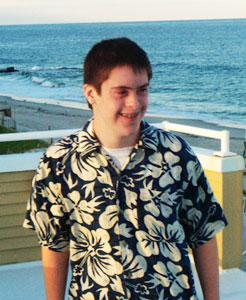NPD: Neurodevelopmental Processing Deficits
Understand Neurodevelopmental Processing & Its Effect on Global Function
by Bob Doman
Neurodevelopmental Processing and Neurodevelopmental Processing Deficits are terms needed to help people understand the significance of processing and processing inadequacies, or deficits. Neurodevelopmental processing deficits are becoming ubiquitous because of numerous factors that limit the perception of what could be and factors that limit the opportunities needed for the development of strong processing.
Neurodevelopmental processing, or simply “processing,” is a term referencing mental cognitive functions that include the ability to learn from what we see and the words that we hear, as well as what we can remember, mentally manipulate, and use to think and function. These components include short-term memory, working memory, long-term memory, executive function, and fluid intelligence. These pieces are part of the whole which determine our brain’s processing ability, cognition, and simply how smart we are.
An NPD, or neurodevelopmental processing deficit, is simply not having the processing power appropriate for your age or the demands placed on you educationally, needed to meet requirements for daily living, healthy social interaction, or work/career. Neurodevelopmental processing grows as a natural process, but the rate of development, degree of development, and later sustainability and further enhancement can be impacted through opportunity and intervention.
I use the equation IP+E=F. Our innate intelligence to the power of our processing ability, plus educational opportunity and knowledge, determines our function, or simply how smart we are. Our innate intelligence is generally untapped, and our ability to develop our processing function is essentially unlimited. We all have the potential to be smarter, much smarter, and to function at higher levels.
Processing is something that typically develops from birth to about nine or ten years of age. There is often a slight progression from the age of ten to our twenties, and then there is usually a slow decline throughout the rest of our lives, if not for intervention or exceptional use of these functions.
From lack of maturity, inappropriate behaviors, and receptive and expressive language issues to problems with learning, difficulty with social interaction, and later to problems with job performance and interpersonal relationships, often the underlying issue is processing function that is inadequate for the expected or needed level of function.
Processing develops through opportunity, stimulation, and input. For children the first years of life are vitally important. The quality and quantity of 1:1 input and interaction largely determine how targeted the input and how effective the environment and opportunities are for the developing child. Factors that limit quality input negatively impact the development of processing. Some of the limiting factors include lack of the most fundamental piece affecting this development, i.e. 1:1 positive interaction with parents. A child provides parents with instantaneous feedback as to whether the input they are receiving is appropriate and stimulating and targeted or not; and parents innately respond and modify their interaction. This 1:1 interaction can produce targeted input, meaning input that specifically fits that individual at that point in time. The further we get from targeted input, the less effectively the child’s environment develops their processing function. Even trying to interact and be targeted with two children of the same age and keeping them both engaged can be challenging. What about 1:5, or 1:10, or even 1:30? The younger the child and the lower the processing level, the more difficult it is to provide them with targeted input. Opportunity is that which produces neurodevelopmental processing.
There are many factors which produce NPDs, including the decline of the family unit, an increase in the number of working mothers, limited expectations, negative societal influences, decline of reading ability, addictions to screens, inferior educational practices, and sensory processing issues, as well as the increase in labels and “diseases” that limit expectations.
For five decades we have assessed and worked with neurodevelopmental processing with tens of thousands of individuals, covering the full range of individuals from babies to geriatrics, as well as the full spectrum of developmental issues and labels from brain injury, autism, Down syndrome, dyslexia, and ADHD, to the “gifted.” Utilizing interventions, which have included many 1:1 activities, apps, and software such as our Simply Smarter program, it is unquestionable that anyone at any age can improve their processing ability and improve their overall function.
Significance for Those with Developmental Issues
To varying degrees, NPDs are significant, or the primary factors, in determining the level of function in the entire population; but they may have the greatest impact on all of those with developmental delays or issues.
ADHD
The primary issue for many if not most children labeled as having ADHD is an inadequate level of processing. If you have a ten-year-old child with the processing function of a four- or five-year-old, which is not unusual, and even possibly having good innate intelligence, you have a child with the attention span of a four- or five-year-old, the distractibility of a four- or five-year-old, the lack of executive function exhibited by most four- or five-year-olds, and often the maturity and behavioral issues associated with four- or five-year-olds. The “diagnosis” of ADHD is a checklist that essentially characterizes a typical younger child. Should we be using medications to slow down four- or five-year-olds so they can sit and attend longer? Then why do it with that with those labeled as ADHD, when we can easily address the common cause of the issue– a neurodevelopmental processing deficit? The medical disease model implies some mysterious, underlying limiting factor in these individuals. There can be contributing dietary factors, as well as issues related to their home, school environments, and negative behavior patterns; but the most common issue with the vast majority labeled with ADHD, this perceived incurable disease, is simply a processing inadequacy, and particularly an auditory sequential processing problem. Their processing ability is inadequate for the demands of their chronological age. We establish patterns of behaviors in our early lives. If processing has not been developed adequately when we are young, it can result in attention and behavior patterns that can remain with us for the rest of our lives. Patterns can be changed, but first we need to address the underlying issue, the processing deficit.
Autism Spectrum Disorders
The severity of those placed on the autism spectrum is essentially measured by the degree of sensory dysfunction, as well as the degree to which the child is not present and engaged, or engaged in DSAs, debilitating sensory addictive behaviors. Sensory issues impair the child’s ability to participate in, engage in, and learn from their environment; and this directly impacts their ability to develop their processing abilities. The impaired processing and related lack of engagement leads to varying degrees of global immaturity, poor receptive and expressive language, difficulty understanding and relating to people, and lack of executive function, etc. Foundational to improving the function of those on the spectrum or getting them off the spectrum is addressing their processing inadequacies. The higher their processing, the higher their global level of function. The primary difference between those on the various levels of the spectrum is processing level.
Down Syndrome
Children and adults with Down syndrome have NPDs, and their overall level of function can universally be determined by their processing level. Low functioning individuals with Down syndrome have low processing function, and those given the opportunity to develop “typical” processing levels can function in” typical” ranges. Processing can be improved in every individual with Down syndrome, at any age, and their global function and independence developed with it, if given the opportunity.
Dyslexia, Dyscalculia, and Other Learning Disabilities and Issues
Children learn differently, and a significant component in those differences reflects inefficiencies in auditory and/or visual processing and one size fits all curriculum. Children will generally get labeled as having a learning related disability if they are seen as having “normal” intelligence, but have a problem learning to read, or doing math, or learning in general. These problems can often be remediated and fixed by identifying and addressing their processing issues and by modifying the approach to better fit their individual strengths, while remediating their weakness. Having seen literally thousands of such children go from having issues to being at the head of the class in a short time bears testament to where potential really lies, if the children are given the help they need to turn their weaknesses into strengths.
Behavior Problems and Disorders
Behavior problems are becoming increasingly prevalent, largely as a reflection of societal trends which have impacted the role of parents and family and decreased such fundamentals as teaching children that there are consequences to their behavior, teaching them responsibility, and developing independence. There is, however, often some level of issue relative to sequential processing that impacts their global maturity, ability to process directions, and the development of executive function. Behavior issues and resolution require a thorough understanding of the whole child, including the family situation, parenting, schools, and other influences. Addressing any NPDs improves their executive function and helps to address their behavior issues.
Average/Typical Joe
There is no more limiting perception of individual potential than being viewed as “average” or “typical.” The vast majority of the population fits into this category. Being “average” or “typical” limits expectations and opportunity. “Average/typical” is generally perceived to be simply a reflection of innate intelligence. It is not! Every “average/typical” adult or child is not restricted by innate potential. With rare exception, all our innate potentials are sufficient to develop super levels of function if provided with the opportunity to develop our processing.
IP+E=F
Your innate potential to the power of your processing ability plus your E (education/knowledge) determines your functional intelligence– how smart you are.
Using the tools to develop processing should be at or near the top of every child’s curriculum and parent’s priority. Everyone trying to improve the quality of their lives can and should work to be simply smarter, and they can.
We have the tools to help everyone function better, and we need to use them.
Related Posts
Processing Power: What Every Parent Needs to Know
Parenting 101: Processing, Behavior, and Maturity
California- They’re Not Dreamin, They’re Doing! Getting Serious About Processing and Working Memory
Time to Upgrade Your Processor: Building Better Brains
If You Can’t See It, You Can’t Achieve It
-
Reprinted by permission of The NACD Foundation, Volume 39 No. 5, 2025 ©NACD



